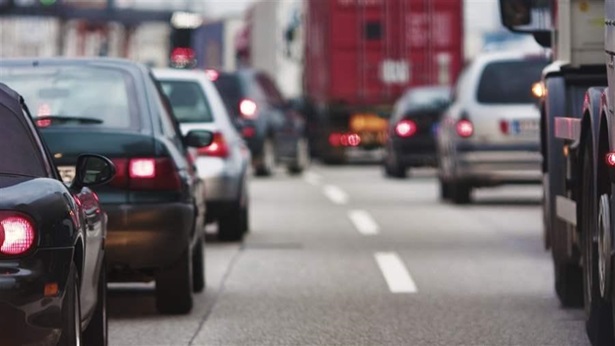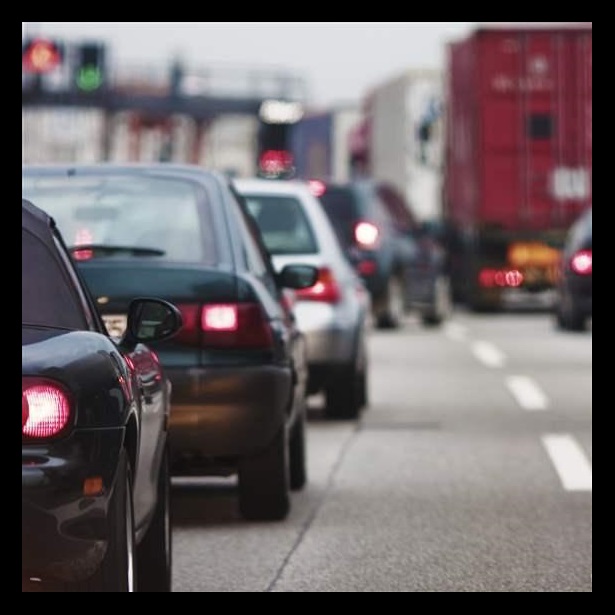Impacts of Licensing Unauthorized Immigrants
An overview of available research
Overview
Previous research by The Pew Charitable Trusts examined the decisions that 10 states and the District of Columbia made when designing and implementing their laws to issue driver’s licenses to unauthorized immigrants. Legislatures considering extending driver’s licenses to unauthorized immigrants debate such potential impacts as the number of insured drivers, public safety, and the economy. This brief provides an overview of the research exploring these potential effects.
These laws are relatively new, so limited data are available with which to study their impact. Eight of the 11 jurisdictions that issue licenses to the unauthorized began doing so in 2013 or later.1 Although the available data and analysis give a sense of the potential effect, they also point to the need for more research. In the future, more knowledge about the impact of laws allowing unauthorized immigrants to obtain driver’s licenses would enable states to perform cost-benefit analyses of their proposed legislation and existing laws, and would allow state policymakers to make more informed decisions. Pew does not take a policy position on whether states should issue driver’s licenses to unauthorized immigrants.
Impact on rates for automobile insurance coverage
One might assume that newly licensed drivers would purchase insurance premiums, resulting in a higher overall number of insured motorists. However, the effect of licensing unauthorized immigrants is just one of several factors that influence whether drivers carry auto insurance. The requirements of state laws, the availability of insurance, and the state’s economic conditions may all contribute to the percentage of licensed and unlicensed drivers obtaining auto insurance, making it difficult to isolate the impact of laws that allow unauthorized immigrants to obtain licenses.
In 49 states and the District, licensed drivers are required by law to secure auto liability insurance, helping to ensure that people are compensated for injuries or property damage that occur in automobile accidents.2 (Only New Hampshire does not require licensed drivers to purchase liability insurance.) Still, individuals may elect to drive without insurance—uninsurance rates in the states range from 4 percent in Massachusetts to 26 percent in Oklahoma.3 Additionally, unlicensed, unauthorized immigrant drivers may already be insured. In some states, unlicensed drivers may be able to purchase insurance from companies that opt to sell policies to individuals who provide foreign licenses or foreign identification cards. These factors hinder the evaluation of changes in insurance coverage rates that result from implementing a law extending driving privileges to unauthorized immigrants.
Economic conditions can also influence how many drivers choose to forgo purchasing automobile insurance. The Insurance Research Council has shown that as the national unemployment rate increases, so does the proportion of uninsured motorist insurance claims.4 Many of the states that issue licenses to unauthorized immigrants began doing so in the wake of the Great Recession, when uninsurance rates may have been abnormally high, further complicating evaluation.
Nonetheless, researchers have made efforts to estimate the impact on insurance coverage rates of issuing such licenses. Evidence has been mixed thus far. A 2008 study commissioned by Utah’s Legislature matched data from individuals who hold the state’s driving privilege card—the alternative license provided to unauthorized immigrants—to an insurance verification database and found that 76 percent of cardholders had vehicle insurance. That compares with 82 percent of those holding standard driver’s licenses.5
A 2011 study published in the Journal of Insurance Regulation found no significant difference in insurance rates between states that require license applicants to prove they are lawfully in the country and those without such restrictions.6 Additionally, for states that allow unauthorized immigrants to obtain licenses, the study found that a 1 percent increase in a state’s unauthorized population was associated with a nearly 2 percent increase in uninsured motorists (when controlling for such factors as requirements for compulsory uninsured motorist liability, the unemployment rate, and insurance affordability, among others).
The percentage of drivers who are insured can also affect the cost of insurance premiums: More insured drivers in a state can help to decrease the price for the uninsured motorist coverage policy component, while fewer insured drivers can cause that cost to increase. A study examining the impact of laws that prevented a person who could not demonstrate legal presence in the United States from obtaining a driver’s license showed that annual premiums for all drivers rose by an average of $17 a year, or about 2 percent.7
Impact on public safety
To obtain a license, drivers must pass knowledge and road tests sanctioned by their state, ensuring that they have a threshold understanding of the rules of the road. Evidence from a 2012 study conducted by the California Department of Motor Vehicles suggested that drivers without valid licenses were nearly three times more likely to cause a fatal accident than were licensed drivers over the 23-year period studied. Unlicensed drivers in that state were even found to be more hazardous than drivers whose licenses were suspended or revoked.8 A 2011 study by the AAA Foundation for Traffic Safety showed similar results: Five percent of fatal crashes between 2007 and 2009 were caused by unlicensed drivers, a proportion that increased from 1990 through 2007, although that trend appears to have ended or even reversed.9 The 2011 Journal of Insurance Regulation study found that an increase in uninsured motorists led to more crash fatalities.10 Given these initial findings, more data are needed on the correlation among driver’s license issuance, purchasing of insurance, and accident rates.
Demonstrating a change in accident rates following the implementation of licenses for unauthorized immigrants is largely complicated because of the way in which accident data are collected and reported. The National Highway Traffic and Safety Administration maintains the Fatality Analysis Reporting System (FARS), the only complete nationwide database of uniformly coded crashes. However, FARS only includes crashes in which at least one fatality occurred.11 Improvements to automobile technology and design that increase safety and reduce fatalities make it difficult to separate the impacts of a particular licensing program from general safety advancements.
Impact on the economy
Some proponents of licensing the unauthorized population to drive assert that the ability to obtain driver’s licenses would allow unauthorized immigrants broader access to employment, which could in turn increase incomes, and thereby their tax contributions and consumption.12 However, little data exist to measure the actual impact of new license laws on any of these variables.
In testimony before the Vermont House and Senate Committees on Transportation and Agriculture in 2013, migrant workers and farmers emphasized that a lack of transportation options forced employees to rely on rides to and from work from employers.13 Such arrangements place additional burdens on employers’ time and can prevent workers from seeking jobs that align with their skill level or attaining better working conditions. However, a study by the North Carolina Department of Public Safety was unable to determine a quantifiable economic impact of making unauthorized immigrants eligible for driver’s licenses. Still, some industry representatives in that state reported that employers would benefit if unauthorized workers were able to legally drive to their job sites.14
In 2008, Oregon passed a law requiring license applicants to demonstrate legal presence. A study by the Oregon Department of Transportation estimated the economic impact of immigrants losing licenses they already had. The research anticipated that the unauthorized labor force would shrink, resulting in a reduction of state gross domestic product between $134.0 million and $201.9 million, or about 0.1 percent.15 Through interviews with Oregon residents, the researchers heard that fear and uncertainty caused by the law were affecting individuals’ habits and routines. Furthermore, unauthorized immigrants reported reducing their consumption when they needed to present official identification (such as a driver’s license) to make a purchase or when they had to rely on public transportation to travel with their purchases.
Conclusion: The need for more data
Policymakers have indicated that it would be useful to have more data about the impact of laws allowing unauthorized immigrants to obtain state driver’s licenses. However, isolating the driving habits, insurance coverage, and economic activity of the newly licensed population from that of other drivers is likely to continue to present unique research challenges. Methods of data collection followed by law enforcement agencies and others can impede distinguishing alternative license holders from the general licensed population. For example, in a traffic stop, accident report, or other encounter with law enforcement, drivers are generally categorized as either licensed or unlicensed, making it difficult or impossible to separate those bearing alternative licenses from those who hold regular driver’s licenses. Furthermore, law enforcement may choose not to track alternative license holders separately because they want all residents, regardless of immigration status, to cooperate with police investigations and because they want to avoid the potential for profiling based on immigration status. Unauthorized individuals may be unwilling to disclose their immigration status for surveys or other studies examining their choices after obtaining a license. Finally, the federal Driver’s Privacy Protection Act, as well as provisions in individual state’s laws, limits state issuing agencies’ ability to share personal information about license holders.16
In 2015, two additional states—Delaware and Hawaii—passed laws to make licenses available to unauthorized individuals.17 As these states implement their laws, and as other states with recently created policies continue to license a larger proportion of their unauthorized population, greater opportunities may arise to study the impact of these laws on the states’ insurance markets, public safety, and economies. Ongoing assessments of these areas will provide valuable information for policymakers to consider as states continue to explore alternative driver’s licenses, as well as other areas of immigration-related policy.
Endnotes
- The Pew Charitable Trusts, Deciding Who Drives: State Choices Surrounding Unauthorized Immigrants and Driver’s Licenses (August 2015), http://www.pewtrusts.org/~/media/Assets/2015/08/Deciding-Who-Drives.pdf.
- Insurance Information Institute, “Compulsory Auto/Uninsured Motorists” (August 2015), http://www.iii.org/issue-update/compulsory-auto-uninsured-motorists.
- Ibid.
- If an accident occurs and the at-fault driver does not have liability insurance, the victim may file an uninsured motorist claim with his or her own insurance company and be compensated by his or her own policy for damages. Insurance Research Council, Uninsured Motorists 2011 Edition (April 2011), http://www.insurance-research.org/research-publications/uninsured-motorists-2011-edition-march-2011.
- Office of the Utah Legislative Auditor General, “Follow-Up of Sample Matching Driving Privilege (DP) Cards to Vehicle Insurance” (January 2008), http://le.utah.gov/audit/08_bilr.pdf.
- J. Tim Query and Risa Kumazawa, “Examining the Impact of Issuing Driver's Licenses to Undocumented Immigrants and Other Socioeconomic Factors on the Percentage of Uninsured Motorists,” Journal of Insurance Regulation 30 (2011): 265–285, http://business.nmsu.edu/~tquery/research/UM-NM_%20FINAL%20JIR%20VERSION.pdf.
- Mauricio Caceres and Kenneth P. Jameson, “The Effects on Insurance Costs of Restricting Undocumented Immigrants Access to Driver Licenses,” Southern Economic Journal 81, no. 4 (2015): 907–927.
- Sukhvir S. Brar, Estimation of Fatal Crash Rates for Suspended/Revoked and Unlicensed Drivers in California, California Department of Motor Vehicles (September 2012), http://apps.dmv.ca.gov/about/profile/rd/r_d_report/Section_6/S6-238.pdf.
- AAA Foundation for Traffic Safety, Unlicensed to Kill (November 2011), https://www.aaafoundation.org/sites/default/files/2011Unlicensed2Kill.pdf.
- Query and Kumazawa, “Examining the Impact.”
- National Highway Traffic Safety Administration, NHTSA’s Crash Data Collection Programs, report to Congress (April 2010), http://www-nrd.nhtsa.dot.gov/Pubs/811337.pdf.
- Report of the Study Committee on Migrant Worker Access to Driver’s Licenses and Non-Driver Identification Cards, Report to the House and Senate Committees on Transportation and on Agriculture Pursuant to No. 95 of the Acts of 2012, Jan. 15, 2013.
- Ibid.
- North Carolina Department of Public Safety, Report on Study of Immigration Measures, Session Law 2013-418, March 2014, 6.
- Mary C. King, Assessment of the Socio-Economic Impacts of SB 1080 on Immigrant Groups, Oregon Department of Transportation (June 2011), http://www.oregon.gov/ODOT/TD/TP_RES/docs/reports/2011/sb1080.pdf.
- 18 USC Section 2721.
- Hawaii H.B. 1007, http://www.capitol.hawaii.gov/measure_indiv.aspx?billtype=HB&billnumber=1007; Delaware S.B. 59, http://legis.delaware.gov/LIS/lis148.nsf/vwLegislation/SB+59/$file/legis.html?open.













